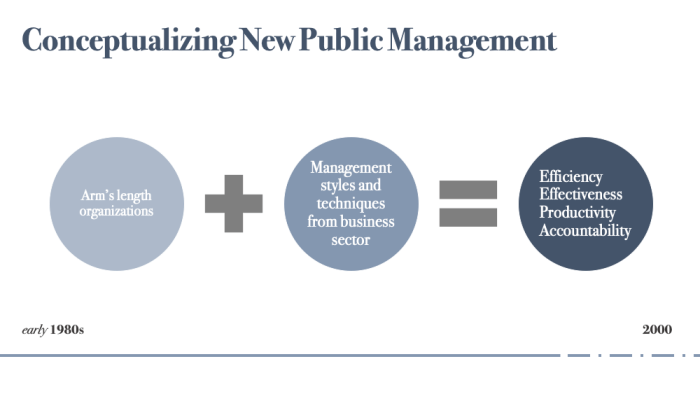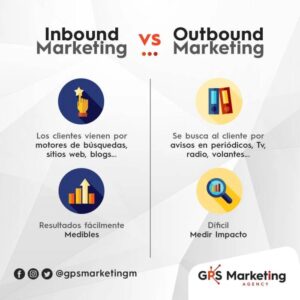
As public relations tools 2025 takes center stage, this exploration invites readers into a landscape brimming with innovation and strategic insights. The future of public relations is not just about maintaining connections; it’s about leveraging cutting-edge tools to enhance communication, engagement, and overall brand image.
In this rapidly evolving field, understanding emerging trends, integrating sophisticated marketing software, and utilizing market research effectively will be crucial. With new technologies and methodologies shaping the way PR professionals operate, staying ahead of the curve will be key to successful campaigns in the coming years.
Emerging Trends in Public Relations Tools for 2025

The world of public relations is rapidly evolving, with new tools and technologies reshaping how PR professionals engage with their audiences. As we look ahead to 2025, several innovative tools are set to dominate the market, enhancing PR strategies and creating unique opportunities for engagement and communication. Understanding these emerging trends is essential for staying competitive and effectively managing public perceptions in an ever-changing digital landscape.One of the most significant trends in public relations tools is the incorporation of artificial intelligence (AI) and machine learning.
These technologies are streamlining processes and facilitating more targeted communications. Additionally, the rise of immersive technologies, such as virtual reality (VR) and augmented reality (AR), is allowing brands to create compelling narratives that resonate with their audiences. The integration of analytics tools also plays a crucial role in measuring the effectiveness of PR campaigns, enabling professionals to adapt their strategies in real-time.
Artificial Intelligence and Machine Learning in PR
AI and machine learning are at the forefront of transforming public relations tools. These technologies enable PR professionals to analyze data more efficiently and derive insights that inform strategic decisions. Key features of AI in PR tools include:
- Media Monitoring: AI-driven tools can scan multiple media sources in real-time, tracking mentions of brands and identifying trends in public sentiment.
- Content Creation: AI algorithms are now capable of generating press releases and blog posts, allowing PR teams to produce content at a faster rate without sacrificing quality.
- Audience Segmentation: Machine learning helps in identifying specific audience groups based on their online behavior, allowing for personalized communication strategies.
- Sentiment Analysis: Advanced algorithms can analyze the tone of media coverage and social media conversations, giving PR professionals insights into public perception.
“AI is not just a tool; it’s a game-changer for how we understand and engage with our audiences.”
Immersive Technologies Enhancing Engagement
The use of immersive technologies like VR and AR is transforming storytelling in public relations. These tools enable brands to create engaging experiences that captivate audiences and enhance brand recall. Examples of immersive technology applications in PR include:
- Virtual Events: Brands can host immersive virtual conferences or product launches, allowing participants to engage with the content in a more interactive environment.
- Augmented Reality Campaigns: By overlaying digital information in the real world, brands can create interactive experiences that encourage user participation, such as AR filters on social media.
- 360-Degree Videos: This format allows audiences to explore events or locations in an engaging way, providing a unique perspective that traditional media cannot offer.
“Immersive experiences create emotional connections, making messages more memorable and impactful.”
Analytics Tools Driving Strategic Decisions
The growing importance of analytics in public relations cannot be overstated. Advanced analytics tools provide PR professionals with the necessary insights to measure their campaigns’ effectiveness and make data-driven decisions.Key functionalities of analytics tools include:
- Real-Time Reporting: Access to real-time data enables PR teams to gauge the performance of their campaigns and adjust strategies as needed.
- Performance Metrics: Tools that track key performance indicators (KPIs) such as media impressions, engagement rates, and conversion metrics help assess overall effectiveness.
- Competitive Analysis: Analytics tools can compare brand performance against competitors, providing insights into market positioning and potential opportunities.
“Data is the new oil; extracting actionable insights is crucial for effective PR strategies.”
Successful Case Studies Utilizing Emerging PR Tools
Various organizations have successfully adopted these emerging PR tools to enhance their strategies and achieve remarkable results. A notable example includes Coca-Cola, which utilized AI-driven sentiment analysis to tailor its marketing campaign during a major product launch. By understanding consumer sentiments in real-time, they adjusted their messaging, resulting in a significant increase in engagement.Another example is IKEA, which embraced AR technology to enhance customer experience through its app.
Users can visualize how furniture will look in their homes before making a purchase, significantly boosting customer satisfaction and sales.As we move toward 2025, embracing these innovative tools and technologies will be essential for public relations professionals aiming to remain relevant and impactful in their communications.
The Role of Market Research in Shaping PR Strategies
Market research is a critical component in developing effective public relations strategies. By understanding the target audience, market dynamics, and competitive landscape, PR professionals can craft messages that resonate and select tools that maximize outreach. The significance of market research lies in its ability to provide actionable insights that lead to informed decision-making and ultimately, successful PR campaigns.Comprehensive market research in the PR field involves a variety of methodologies that ensure a rounded understanding of the market landscape.
These methodologies typically encompass qualitative and quantitative research techniques. Qualitative methods, such as focus groups and interviews, provide deep insights into consumer attitudes and perceptions. On the other hand, quantitative methods, such as surveys and data analysis, offer statistical evidence of market trends and audience behavior. Combining these approaches allows PR practitioners to derive a rich dataset that informs strategy.
Methodologies for Conducting Market Research in PR
Utilizing a mix of methodologies offers a comprehensive view of the market landscape. Below are some key research techniques commonly employed in the PR field:
- Surveys: These are structured questionnaires designed to gather quantitative data from a target audience. By using online survey tools, PR professionals can reach a broader audience quickly and analyze patterns in responses.
- Focus Groups: Small groups of participants engage in discussions that reveal attitudes and perceptions. This qualitative method provides deeper insights into audience feelings and motivations.
- Interviews: One-on-one interviews with industry experts or key audience members can yield detailed information that may not surface in group settings.
- Social Media Analytics: Analyzing interactions and engagement on platforms like Twitter, Facebook, and Instagram helps in understanding audience interests and sentiment towards a brand.
- Competitive Analysis: Studying competitors’ PR strategies and campaigns highlights industry standards and identifies gaps that can be leveraged for differentiation.
Data-driven insights play a pivotal role in informing PR campaigns and tool selection. For instance, a PR campaign for a new health product can be grounded in data that indicates a growing trend in consumer interest towards wellness. By analyzing survey results and social media conversations, PR teams can tailor their messaging to emphasize benefits that align with audience values.
“The best PR campaigns are built on a foundation of solid market research that provides insights into audience motivations and behaviors.”
A notable example involves a tech company launching a new gadget. Through extensive market research, they discovered that their target demographic valued sustainability. Consequently, the campaign highlighted eco-friendly materials and practices, leading to a successful product launch and solid market penetration. This illustrates how aligning PR strategies with market data can significantly enhance campaign effectiveness and audience engagement.
Integration of Marketing Software in Public Relations

The integration of marketing software into public relations (PR) efforts has become essential in today’s fast-paced digital landscape. This synergy allows PR professionals to leverage data-driven insights and streamline communication strategies, ultimately enhancing outreach and engagement. By aligning marketing and PR initiatives, organizations can create cohesive campaigns that resonate better with their target audiences.The effectiveness of PR campaigns can be significantly amplified through the use of marketing software solutions.
These tools enable PR teams to automate processes, analyze audience behavior, and measure campaign performance in real time. Consequently, this integration leads to more informed decision-making and enables PR professionals to craft tailored messages that meet the specific needs of their audiences.
Comparison of Marketing Software Options for PR Campaigns
Various marketing software options can enhance PR campaigns through different functionalities. Here are some noteworthy tools and how they stand out:
| Software | Key Features | Ideal For |
|---|---|---|
| HubSpot | CRM integration, content management, email marketing | Inbound marketing strategies and lead nurturing |
| Hootsuite | Social media management, scheduling, analytics | Social media campaigns and audience engagement |
| Mailchimp | Email automation, audience segmentation, A/B testing | Email outreach and targeted communication |
| Sprout Social | Social listening, engagement tracking, reporting | Monitoring brand reputation and audience sentiment |
Utilizing these tools can lead to improved audience targeting and more effective communication. For example, HubSpot’s CRM allows PR teams to track interactions and personalize outreach, while Hootsuite’s analytics provide insights into social media performance, guiding future strategies.
Benefits of Telemarketing Strategies with PR Tools
Incorporating telemarketing strategies alongside PR tools offers numerous benefits for outreach efforts. Telemarketing allows for direct communication with key stakeholders, journalists, and influencers, creating opportunities for personal engagement that digital methods may lack. This personal touch can foster relationships that are vital for successful PR campaigns.The advantages of combining telemarketing with PR tools include:
- Immediate Feedback: Telemarketing provides quick responses to inquiries, allowing PR teams to adjust strategies in real time.
- Relationship Building: Direct conversations can help establish trust and rapport with media contacts and clients.
- Targeted Outreach: Combining data from PR tools helps identify key individuals for tailored telemarketing campaigns.
- Enhanced Message Delivery: Personal calls can reinforce key messages and ensure that the audience fully comprehends the campaign’s objectives.
In summary, the integration of marketing software into public relations not only streamlines operations but also enhances engagement and outreach through personalized strategies. By leveraging these tools and methods, PR professionals can create more effective and impactful campaigns.
Summary
In summary, the landscape of public relations tools in 2025 is poised for significant transformation. Embracing innovative technologies, conducting thorough market research, and integrating marketing strategies will empower PR professionals to create impactful campaigns. As we move forward, the ability to adapt and utilize these evolving tools will define success in the public relations arena.
FAQ Insights
What are the key features to look for in PR tools for 2025?
Key features include data analytics capabilities, real-time monitoring, user-friendly interfaces, and integration with other marketing platforms.
How will market research influence PR strategies in 2025?
Market research will provide the insights needed to tailor strategies effectively, ensuring that campaigns resonate with target audiences.
Can traditional PR methods still be effective in 2025?
Yes, traditional methods can complement modern techniques, but they should be integrated with new tools and technologies for maximum effectiveness.
What role does telemarketing play in PR strategies for 2025?
Telemarketing can enhance outreach efforts, allowing for direct communication with audiences and fostering stronger relationships.
How can case studies help in selecting PR tools?
Case studies provide practical examples of successful tool implementation, helping PR professionals learn from real-world applications and outcomes.





